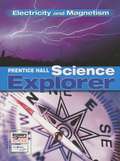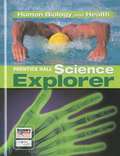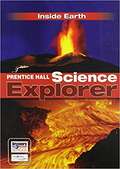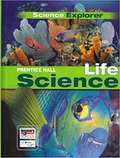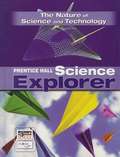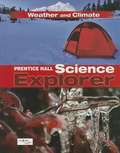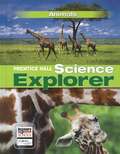- Table View
- List View
Prentice Hall Science Explorer Electricity and Magnetism
by Michael J. Padilla Ioannis Miaoulis Martha CyrNIMAC-source textbook
Prentice Hall Science Explorer Environmental Science
by Michael J. Padilla Ioannis Miaoulis Martha CyrNIMAC-sourced textbook
Prentice Hall Science Explorer Georgia Earth Science
by Michael J. Padilla Ioannis Miaoulis Martha CyrNIMAC-sourced textbook
Prentice Hall Science Explorer Georgia Earth Science
by Michael J. Padilla Ioannis Miaoulis Martha CyrNIMAC-sourced textbook
Prentice Hall Science Explorer Human Biology and Health
by Michael J. Padilla Ioannis Miaoulis Martha CyrNIMAC-sourced textbook
Prentice Hall Science Explorer Life Science
by Michael J. Padilla Ioannis Miaoulis Martha CyrNIMAC-source textbook
Prentice Hall Science Explorer Motion, Forces and Energy
by Michael J. Padilla Ioannis Miaoulis Martha CyrTextbook on physics of motion, forces and energy for middle school students. In addition to the science content this book makes connections to social studies and the arts. This textbook is not just filled with dull facts and equations, but includes many hands-on activities.
Prentice Hall Science Explorer Motion, Forces, and Energy
by Michael J. Padilla Ioannis Miaoulis Martha CyrNIMAC-sourced textbook
Prentice Hall Science Explorer Sound and Light
by Michael J. Padilla Ioannis Miaoulis Martha CyrNIMAC-sourced textbook
Prentice Hall Science Explorer The Nature of Science and Technology
by Michael J. Padilla Ioannis Miaoulis Martha CyrNIMAC-sourced textbook
Prentice Hall Science Explorer Weather and Climate
by Michael J. Padilla Ioannis Miaoulis Martha CyrNIMAC-sourced textbook
Prentice Hall Science Explorer, Grade 6 (Oregon)
by Michael J. Padilla Ioannis Miaoulis Martha CyrNIMAC-sourced textbook
Prentice Hall Science Explorer: Adapted Reading Study Workbook
by Michael J. Padilla Ioannis Miaoulis Martha CyrAssists the student learn about cells and heredity through summaries, study worksheets, note-taking skills and graphic organizers.
Prentice Hall Science Explorer: Adapted Reading and Study Workbook
by Michael J. Padilla Ioannis Miaoulis Martha CyrThe book is more of a summary and contains questions at the end of each section. It also entails graphic charts, tables and note-taking steps.
Prentice Hall Science Explorer: Astronomy
by Prentice HallIn this book you get to learn about the earth, moon, sun, the solar system, stars, galaxies, and the universe.
Prentice Hall Science Explorer: Astronomy, Guided Reading and Study Workbook
by Prentice HallWorkbook to accompany textbook on astronomy.

